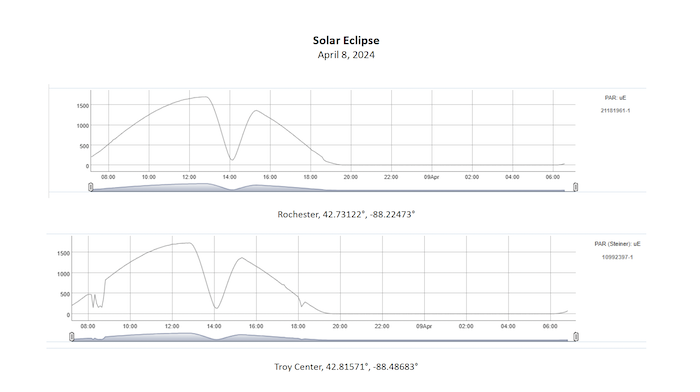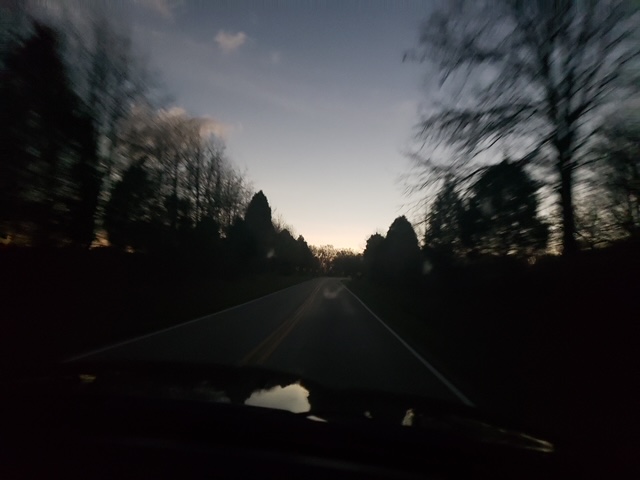Jim Stute, an independent research agronomist and East Troy, Wis., no-tiller, captured these readings from weather stations in Rochester and Troy Center, Wis., during the solar eclipse April 8. The graphs show the decline in photosynthetically active radiation (PAR), the portion of the light spectrum that plants use for photosynthesis, as the moon covered the sun.

Readings from weather stations in Rochester and Troy Center, Wis., during the solar eclipse April 8 show the decline in photosynthetically active radiation (PAR), the portion of the light spectrum that plants use for photosynthesis. Courtesy Jim Stute.
The eclipse peaked at 2:08 p.m. CST in Stute's area of Wisconsin, illustrated here as the lowest point on the graphs. Stute says the two charts are a bit out of synch because of different connection times.
"Some rainy day, I'll graph them with consistent axes," he says. "Couldn't ask for better conditions."
Tim Burenga, vice president of sales at agricultural attachment manufacturer Worksaver, shared this photo of the eclipse from Indiana, which was in the path of totality.

Tim Burenga, vice president of sales at agricultural attachment manufacturer Worksaver, shared this photo of the eclipse from Indiana, which was in the path of totality. Photo credit: Tim Burenga.
Did you capture any photos or interesting data during the April 8 eclipse? Share your photos and stories with us in the comments below.
Related Content
Wide-Row Corn Opens Up Opportunity for Soil Health Improvements, Additional Profits
Does Smoke from Wildfires Affect Crop Yields?
On-Farm Trials Show Cover Crops, Planting Green Can Suppress Weeds







Post a comment
Report Abusive Comment